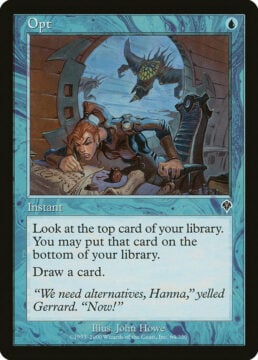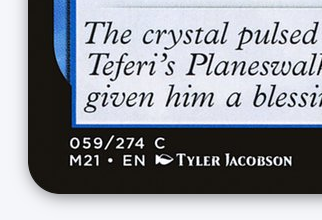You’ve acquired some new Magic: The Gathering cards! Exciting. But now somebody wants to trade with you. How can you tell which cards are rare and which are common?
Over the years, Wizards of the Coast has expanded Magic’s catalog system for tracking and collecting rare cards. In some cases, finding your card’s rarity is as simple as looking at a number or symbol. Want to learn more before your first trade? We’ve got you covered with this handy explainer.
How to identify rarity on cards
Magic: The Gathering cards come in four types of rarity: Common, Uncommon, Rare, and Mythic Rare. Technically, basic land cards (such as Island and Swamp) are considered “Common” but are even more prevalent than regular Common cards.
Here’s a Mythic Rare card: Ragavan, Nimble Pilferer, from the recently-released set Modern Horizons 2.

How can you tell that Ragavan is a Mythic Rare? Magic: The Gathering cards printed since the 1998 expansion Exodus include a color-coded expansion symbol in the center right of the card that indicates its rarity. Here is what each of the four colors of the expansion symbols look like, with Common black, Uncommon silver, Rare gold, and Mythic Rare orange/rose gold.
Mythic Rares were added to the game in 2008’s expansion Shards of Alara—before then, cards were only Common, Uncommon, or Rare. The first printing of Opt, from the 2000 expansion Invasion, also has a black expansion symbol to indicate it is Common.

There are also “premium” versions of cards, which appear in booster packs at much lower frequency than regular versions. These premium versions can have different rarity than their regular versions—this Opt from the Strixhaven Mystical Archive is Uncommon (with silver expansion symbol) even though regular versions of Opt are Common.

Still confused? If you’re playing with new cards, then don’t worry. Wizards of the Coast introduced a new way to track your cards’ rarity with the M15 Core Set in July 2014.

If you look carefully at the bottom of these newer cards, you will see two sets of numbers divided by a slash, followed by a letter.

Those numbers are the collector number of the card within its set (Opt was card 59 out of 274 in the M21 Core Set). The letter is the rarity: C, U, R, or M. This way, even if you cannot recognize the color of the expansion symbol, you can still check the rarity on the card itself.
If you’re still unsure, search your card’s name using the Gatherer to figure out its rarity. This is a great way to keep track of your older cards, especially if they were released prior to 1998.







